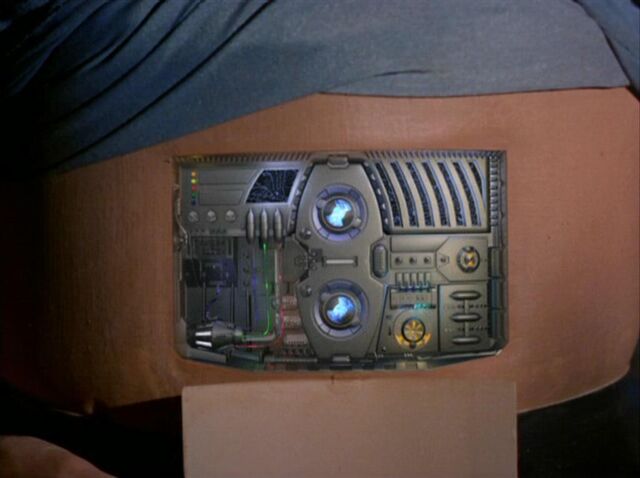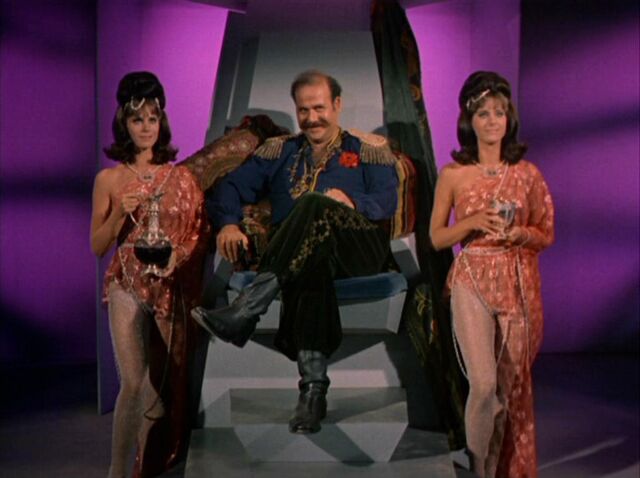It’s time for [at long last]…Star Trek Saturdays #41!!!
This week’s episode is “I, Mudd” and it is absolutely hilarious in a way Trek usually isn’t. The return of Harry Mudd, the only other reoccurring TOS villain besides Khan, is most welcome and the whole episode is, even with the danger posed this time around, a romp from start to finish.
Before I go on, let me profusely apologize for not having done this since September. It’s not like I haven’t been writing–I’ve done a ton of news stories over on Another Castle, for instance, and had some other big stuff happen, which I’ll have up here shortly. But this blog and, most especially, this feature, have suffered drastically for all my increased productivity. I am truly, truly sorry for that.
Also yes, I know posting this the day after the death of the iconic Leonard Nimoy. I’ll post my own tribute to the man shortly, but I hope the way I describe Spock here will articulate just how key Nimoy was, as Alan Sepinwall wrote, to making Trek the institution it is.
Now then.
We open with Spock & McCoy walking down the halls when a new crewman, Norman (Richard Tatro), passes them by and barely says hello. McCoy mentions how irritatingly unemotional he finds Norman; Spock replies that he hadn’t noticed. The whole exchange is golden, but the capper is when Spock, after McCoy mentions Norman still hasn’t shown up for his physical, responds “He’s probably terrified of your beads and rattles.” Spock is so wonderfully wry throughout this episode and it’s great.
Norman enters the auxiliary control deck, knocks out the crewman there and initiates an override. On the bridge, Sulu registers a course change but can’t correct it. Kirk orders security to auxiliary control. Norman heads to engineering, knocks out most of the crew there (including Scotty), and jams the controls.
Norman then makes his way to the bridge and exclaims that he’s in control, with the ship slated to reach its new destination in 4 days at Warp 7; he’s jammed the controls so that if anything deviates from this plan, the ship blows up. When asked why he did this, he opens a panel in his stomach to reveal he’s an android.

4 days later (during which time Norman’s been asleep in front of the lift), the ship arrives at an uncharted planet. Norman awakes and tells Kirk that he, Spock, McCoy, Uhura and Chekov must beam down with him to the planet or he’ll destroy the engines. They do so and are ushered into the presence of Lord Mudd the First aka Harcourt Fenton “Harry” Mudd (Roger C. Carmel).

Mudd, surrounded by androids who are mostly beautiful women–the two in the photo are both named Alice (played by twins Alyce and Rhae Andrece) and are part of a series of 500–explains that Kirk and the others have been brought here to spend the rest of their lives on the planet, which he’s named Mudd.
Even though he ended up in prison at the end of his last appearance, Mudd explains that he escaped and turned to illegally reselling patents. He was caught on the planet Deneb V and sentenced to death, but stole a ship and drifted through space until he found planet Mudd. Of course, he doesn’t outright say this; instead, the truth is revealed through a great bit of banter between Carmel and Shatner that is really funny.
Although he likes having a slew of robot women at his beck and call, and he even has an android replica of his nag of an ex-wife, Stella (Kay Elliot) to yell back at, Mudd says he’s so bored because the androids won’t let him leave. He told them to get a spaceship to find more humans to study and so he could leave; finding Kirk & co was just dumb luck.
The androids take the landing party to a recreation area with quarters, where they explain that every comfort will be provided to them. They reveal at Kirk’s prodding that they were made by a humanoid race in the Andromeda galaxy, meant to serve their masters’ every whim. Eventually, the civilization was destroyed by supernova, leaving just exploratory outposts into other galaxies–including planet Mudd–alive. Spock surmises when the androids leave that the sheer amount of them–over 200,000–and their actions mean they must be controlled by a central operator.
Spock discovers a central control room with Norman in it and asks him about it. Norman replies that he isn’t programmed “to respond in that area.” Meanwhile, Scotty and the rest of the crew are beamed down and replaced by androids on Mudd’s orders.
Kirk worries that the crew will grow to love their “gilded cage” and he appears to be right. Chekov is delighted when he finds out the Alices are programmed to act exactly like human females (“This place is even better than Leningrad!”); Scott is astonished by the engineering facilities; McCoy marvels at the research labs and Uhura seems taken with the idea of being transferred to an android body.
Can Kirk get his crew to snap out of it? Can he reclaim the Enterprise and stop Mudd leaving? And do the androids merely want just to serve man?
Like I said, this entire episode is pretty much one big laugh riot. Yeah, some of it is definitely dated–the nagging wife bit especially–but it all works thanks to the energy of the cast and the freewheeling attitude of the script. Although still a scuzz, Mudd is less creepy here. Now, he’s just one big joke. The goofy outfit he’s derived for himself and his loquaciousness help reinforce this. Carmel gives a tremendous performance. His rapport is amazing and it’s a wonder Mudd was never brought back after this outside of The Animated Series (reportedly, there was a plan for Mudd to appear in TNG, but it was never followed through).
The rest of the cast is great too. Like I said, Spock gets a lot of great one-liners and Nimoy proves that one of the ways his unmistakable voice could work was as a dispenser of dry humor. Mild spoiler (but not really if you know how people usually trick robots in fiction), but the crew has to act completely irrationally and bonkers at one point. These scenes are about as funny and surreal as it gets. It’s very Batman ’66-ish in a lot of ways.
Writer Stephen Kandel, who created Mudd, is clearly having a lot of fun here and you get swept along with it. Director Marc Daniels, back after “Mirror Mirror,” doesn’t have a whole lot of flashy tricks here, but he does bring a campy ’60s humor vibe to the whole affair. A little cheesy, sure, but great stuff.
Thanks to Memory Alpha for the pics and episode info and Amazon Instant Video for hosting the series. We’ll see you next time and until then and always, live long and prosper.










 (Hengist)
(Hengist)







